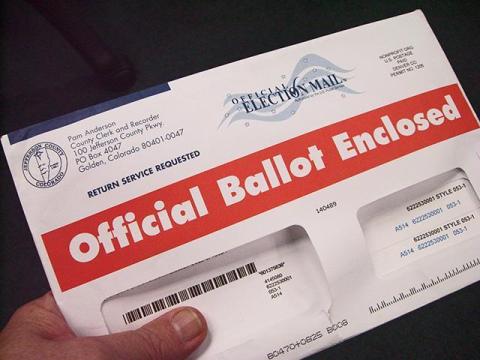DENVER, CO. - The state of Colorado's first open primary since the reform passed in 2016 was a massive success for independent voters and the state's county clerks.
The Associated Press reports that of the 293,153 ballots cast by unaffiliated voters in the primary this year, only 2.4 percent of the ballots were rejected as invalid because the voter cast one for both the Republican and the Democratic Party's primary.
The result stunned state officials, who expected a higher number of rejected ballots after a study of Washington state's first ever open primary in 2008 led them to forecast as much as 7 percent of ballots would have to be rejected as invalid due to double voting in both major parties' primaries.
What that means in absolute numbers:
The State of Colorado was expecting as many as 20,000 voters to invalidate their primary ballots by casting two rather than the one required by the state's new election law.
Instead, just under 7,000 made this mistake wittingly or unwittingly, with the highest concentration of invalid ballots coming from southern Colorado’s Conejos County (at 13.8 percent) and the Eastern Plains’ Kit Carson County (at 10.9 percent). The lowest rejection rate (at 0.4 percent) was in Adams County, Colorado.
Colorado's Secretary of State Wayne Williams said he was "incredibly proud" of the successful efforts of the state's county clerks as well as local and state media to educate voters on the Colorado's new open primary law and ensure as many voters as possible knew they were only allowed to cast a single ballot, although they could pick which primary for which they wanted to cast one:
"I am incredibly proud of the efforts by our county clerks and media partners who helped deliver the message to only vote one ballot. Our office will be working with the clerks to improve the percentage in our next primary election, in 2020."
Supporters of Initiative 108, which Colorado voters approved in 2016 to open the state's primaries to unaffiliated voters, were also thrilled with the results of this inaugural test, and vowed in a press release to continue voter education efforts to ensure the ballot rejection rate is even lower in future Colorado primaries.
The wide variance in county rejection totals suggests media efforts to educate voters on the state's new open primary election laws aren't as impactful as the efforts of county clerks, and underscores the importance of state efforts to ensure independent voters understand Colorado's new open primary rules.
